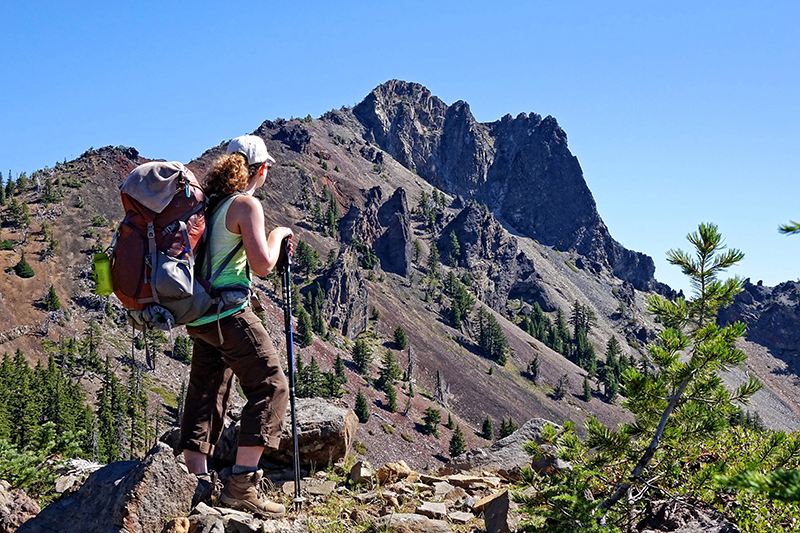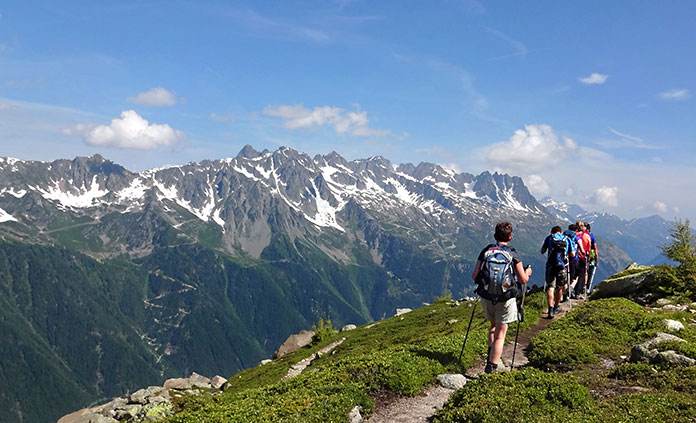You might be thinking, “Don’t you just go on a few treks to practice for hiking?” You should absolutely do that, but if you’re new to hiking or want to go on longer excursions to higher elevations, doing some preseason training can really assist.
This exercise program is made to focus on the muscles that help you climb the trail mile after mile: Your core and main leg muscles get stronger, and it also helps those muscles get more endurance. The post will show you how to train for hiking for beginners.
Table of Contents
Benefits Of Training Hiking
Better Experience
Training can make you enjoy the time on the journey more. When hiking, you won’t feel tired and painful. You can concentrate on enjoying fun and immerse yourself in the beauty of nature. If you don’t overwork, you will have more energy to explore the path, take photos, enjoy your time in the camp, or do anything that can bring you happiness. If you have four pieces of steel, you can also carry more food or luxuries, such as Kindle, mini travel game or flask. When the long journey ends, the benefits will not disappear. A healthy person does not need so much time to recover after travel, and their memory of travel will be more positive.
Pre trip training can strengthen your muscles and tendons and give you a chance to adapt to your shoes
Avoid Blisters & Injuries
Small training before traveling will help you avoid potential blisters and injuries. Exercise the strength and flexibility of knees, ankles and feet is particularly important for backpacking. Resistance training strengthens muscles and tendons while increasing the flexibility of ligaments. This helps reduce the risk of strain or tears. Training can also help prevent blisters by gradually stiffening the skin and giving you time to adapt and familiarize yourself with your shoes. Read our “how to prevent and treat blisters when hiking” and become ninja fighting blisters.
Motivation For Long-term Health And Fitness
The upcoming adventure will become a great goal and inspire you to work hard on fitness. Whenever you think of the beautiful mountains you want to climb, your motivation to walk or squat will be rekindled. Exercise is also very interesting because it can make you active and go out often. You can even encourage your family or friends to train with you!

Training doesn’t need to end in a game. You can develop a long-term physical and mental health decompression plan through training. To integrate training into your lifestyle, you can schedule several challenging hiking or backpacking trips on your calendar throughout the year. For us, nothing can motivate us to exercise more than a grand vision. Check out our backpack guide for inspiration.
How To Train For Hiking?
When you’re prepared, Antin advises that you begin by evaluating your aerobic capacity. Your body’s ability to sustain strenuous activity for extended periods of time is indicated by how much oxygen it uses during physical activity; this is known as endurance. More of this vital gas will be pumped to your brain, heart, and other tissues and muscles where it can be used the more oxygen your lungs can draw in and push into your blood.
Antin suggests doing a slow walking warm-up for at least 15 minutes and continuing until you start to perspire as a way to test your aerobic capacity. You can do this outside or on a treadmill that is set to a 10% incline. Next, start to gradually pick up the pace while only breathing through your nose. Find the quickest pace at which you can continue breathing through your nose for 15 minutes when nasal breathing becomes uncomfortable. Because your aerobic threshold heart rate will be your target for aerobic exercise, take note of your average heart rate during the final leg (a heart monitor or fitness wearable is helpful).
Start your actual training now, focusing on aerobic exercises like running or fast hiking that maintain your heart rate at a constant level just below your aerobic threshold. This initial training will vary in intensity depending on your starting aerobic threshold, but the main objective is to get your heart rate up. And don’t skip this because, according to Antin, there are no shortcuts to aerobic adaptation.
To develop a strength reserve during the first one to eight weeks of aerobic exercise, he also recommends a straightforward weight-training regimen. You will be better able to carry out many of the repetitive motions used in outdoor activities (like stepping up while toting a hefty backpack), thanks to this.
After that, advance to stronger training movements that use multiple body parts simultaneously. Consider overhead squats, cleans, and deadlifts. These will assist you in increasing your strength while also enhancing the neuromuscular coordination of your muscle contractions. “Antin explains that it’s just another way of saying “see: do.” “You are conditioning your body and mind to react quickly as an athlete, regardless of your level.”
If you only have a month or two before your adventure, Antin advises starting in the weight room right away. In light of the time constraints, he advises concentrating on exercises that build muscle endurance and the legs and core, such as squats and planks.
And finally, if you’re preparing for a specific event, focus on conditioning for the circumstances unique to that activity. For ice climbing, for instance, perform calf raises to strengthen those muscles.
No matter how much time you have, make sure you’re well-recovered before you actually leave: Taper your workout intensity one to three weeks before you leave to make sure you’re rested for a big event.
“If given adequate preparation time, your body and mind are incredibly strong, and much can be accomplished, says Antin. “The majority of outdoor activities place a high value on mental ability, and the more time you spend doing them, the more comfortable and confident you will feel beginning the goal objective.”
HikingTraining Schedule
Begin your training eight weeks before your first long hike. A good mix of workout types for each week involves the following:
2 nonconsecutive days of strength training (exercises in this article)
2 nonconsecutive rest days; take more any time you feel your body needs it
3 nonconsecutive cardio sessions weekly until the final two weeks before a major hike
Change your cardio days to long day hikes (60+ minutes each) two weeks before your trip, using a pack that is roughly the same weight as the one you’ll be carrying. On one of your days for strength training, include a fourth training day hike.
Reduce all training one or two days before your trip.
Hiking Training Exercises
Keep the following in mind as you train:
Your body should fit the exercises, not the other way around.
If something hurts, modify the exercise or skip it; and take extra rest days if you feel the need
Go slowly at first and then at your own pace. As your training progresses, increase the repetitions or add more resistance or weight.
Start by taking a quick, 5- to 10-minute walk to get warmed up. Then follow the guidelines below as you progress through the exercises in this article:
When doing faster exercises, just make sure to breathe regularly. Inhale during the initial effort, then exhale as you come back to the starting position.
Each exercise is followed by a 30- to 45-second break (unless otherwise specified).
Perform each of the exercises listed below one after the other, take a two-minute break, and then repeat the exercises (a third set is even better if you have time).
Are Daily Training Performances For Hunting Required?
I’m aware that there is a widespread misconception that training should take up all of your free time, but this couldn’t be further from the truth.
Because your body makes up for the stress you put it under during exercise, training damages muscle fibers, which rest and recovery help to rebuild, allowing you to become stronger. Therefore, you will require at least two rest days per week, preferably not on consecutive days.
More harm than good results come from excessive exercise. Aim for 4 to 5 sessions per week, including possibly some hiking.
Just remember that there is a thin line between pushing yourself too far and overdoing it. Your body does not become stronger if you do not challenge it. However, if you overdo it, it takes too long to recover, which prevents your body from adapting.
You’re actually going to see results and get stronger when you combine consistency with the “goldilocks” zone of training, where you’re pushing yourself just enough.
Conclusion
To be able to hike and backpack harder trails, training is crucial. Most individuals underestimate the physical demands of hiking, which leads to one of two outcomes: either they spend the entire time struggling up the mountain while miserable, or they injure themselves because their bodies weren’t properly prepared.
Yes, accidents can result in injuries, but the majority of them can be avoided by properly preparing your body to withstand the physical strain of hiking while carrying a backpack.
This is why, when it comes to long walks and backpacking excursions, paying attention to how your body is prepared is just as crucial as any other logistics.


